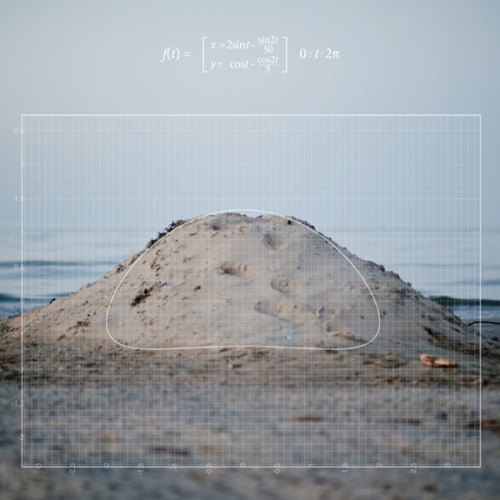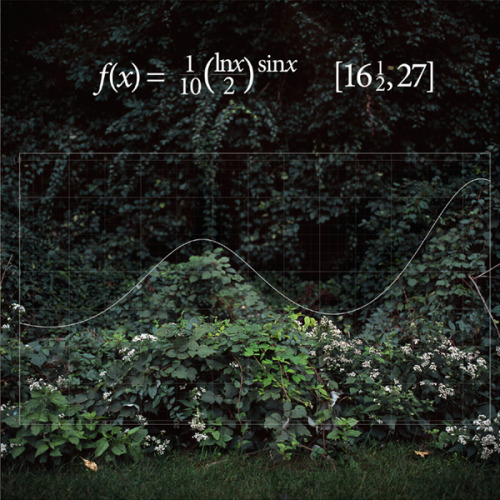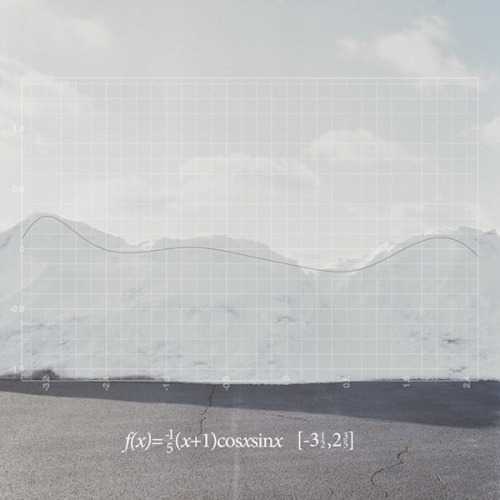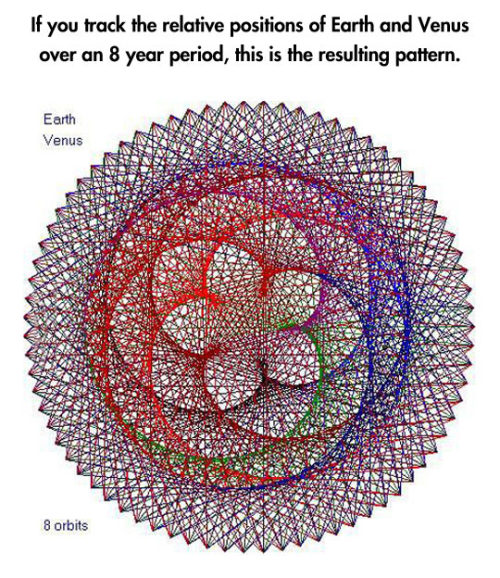Neutron Stars Are Even Weirder Than We Thought
Neutron Stars Are Even Weirder Than We Thought
Let’s face it, it’s hard for rapidly-spinning, crushed cores of dead stars NOT to be weird. But we’re only beginning to understand how truly bizarre these objects — called neutron stars — are.

Neutron stars are the collapsed remains of massive stars that exploded as supernovae. In each explosion, the outer layers of the star are ejected into their surroundings. At the same time, the core collapses, smooshing more than the mass of our Sun into a sphere about as big as the island of Manhattan.

Our Neutron star Interior Composition Explorer (NICER) telescope on the International Space Station is working to discover the nature of neutron stars by studying a specific type, called pulsars. Some recent results from NICER are showing that we might have to update how we think about pulsars!
Here are some things we think we know about neutron stars:
Pulsars are rapidly spinning neutron stars ✔︎
Pulsars get their name because they emit beams of light that we see as flashes. Those beams sweep in and out of our view as the star rotates, like the rays from a lighthouse.

Pulsars can spin ludicrously fast. The fastest known pulsar spins 43,000 times every minute. That’s as fast as blender blades! Our Sun is a bit of a slowpoke compared to that — it takes about a month to spin around once.
The beams come from the poles of their strong magnetic fields ✔︎
Pulsars also have magnetic fields, like the Earth and Sun. But like everything else with pulsars, theirs are super-strength. The magnetic field on a typical pulsar is billions to trillions of times stronger than Earth’s!

Near the magnetic poles, the pulsar’s powerful magnetic field rips charged particles from its surface. Some of these particles follow the magnetic field. They then return to strike the pulsar, heating the surface and causing some of the sweeping beams we see.
The beams come from two hot spots… ❌❓✔︎ 🤷🏽
Think of the Earth’s magnetic field — there are two poles, the North Pole and the South Pole. That’s standard for a magnetic field.

On a pulsar, the spinning magnetic field attracts charged particles to the two poles. That means there should be two hot spots, one at the pulsar’s north magnetic pole and the other at its south magnetic pole.
This is where things start to get weird. Two groups mapped a pulsar, known as J0030, using NICER data. One group found that there were two hot spots, as we might have expected. The other group, though, found that their model worked a little better with three (3!) hot spots. Not two.
… that are circular … ❌❓✔︎ 🤷🏽
The particles that cause the hot spots follow the magnetic field lines to the surface. This means they are concentrated at each of the magnetic poles. We expect the magnetic field to appear nearly the same in any direction when viewed from one of the poles. Such symmetry would produce circular hot spots.

In mapping J0030, one group found that one of the hot spots was circular, as expected. But the second spot may be a crescent. The second team found its three spots worked best as ovals.
… and lie directly across from each other on the pulsar ❌❓✔︎ 🤷🏽
Think back to Earth’s magnetic field again. The two poles are on opposite sides of the Earth from each other. When astronomers first modeled pulsar magnetic fields, they made them similar to Earth’s. That is, the magnetic poles would lie at opposite sides of the pulsar.

Since the hot spots happen where the magnetic poles cross the surface of the pulsar, we would expect the beams of light to come from opposite sides of the pulsar.

But, when those groups mapped J0030, they found another surprising characteristic of the spots. All of the hot spots appear in the southern half of the pulsar, whether there were two or three of them.

This also means that the pulsar’s magnetic field is more complicated than our initial models!
J0030 is the first pulsar where we’ve mapped details of the heated regions on its surface. Will others have similarly bizarre-looking hotspots? Will they bring even more surprises? We’ll have to stay tuned to NICER find out!
And check out the video below for more about how this measurement was done.
Make sure to follow us on Tumblr for your regular dose of space: http://nasa.tumblr.com.
More Posts from Jupyterjones and Others






The 21 Card Trick created in Python.
See how it works and read a little more about it here: [x]
Feel free to ask any questions you may have. :)




Raspberry Multiverse
Stephen Hawking’s Grand design is leading to a non symmetric multiverse. However there is reason to suggest a full symmetric multiverse with point symmetry at the centre of a raspberry shaped pulsating bubble multiverse. For an entangled multiverse, each quantum should have its own 12 fold entanglement relation to all 12 opposite (anti) quantums, each located inside one of the 12 universes. The result is called: Poincaré dodecahedral space symmetry. (see also below: B.F.Roukema) A dodecahedron is also called “Buckyball” An other evidence for space symmetry and the centre of the multiverse is the so called DARK FLOW. Dark flow seems to be found at the edge of the visible universe!! There the “dark flow centre is represented by a so called "Pitch of spacetime”

There are 27 straight lines on a smooth cubic surface (always; for real!)
This talk was given by Theodosios Douvropoulos at our junior colloquium.
I always enjoy myself at Theo’s talks, but he has picked up Vic’s annoying habit of giving talks that are nearly impossible to take good notes on. This talk was at least somewhat elementary, which means that I could at least follow it while being completely unsure of what to write down ;)
——
A cubic surface is a two-dimensional surface in three dimensions which is defined by a cubic polynomial. This statement has to be qualified somewhat if you want to do work with these objects, but for the purpose of listening to a talk, this is all you really need.
The amazing theorem about smooth cubic surfaces was proven by Arthur Cayley in 1849, which is that they contain 27 lines. To be clear, “line” in this context means an actual honest-to-god straight line, and by “contain” we mean that the entire line sits inside the surface, like yes all of it, infinitely far in both directions, without distorting it at all.

(source)
[ Okay, fine, you have to make some concession here: the field has to be algebraically closed and the line is supposed to be a line over that field. And $\Bbb R$ is not algebraically closed, so a ‘line’ really means a complex line, but that’s not any less amazing because it’s still an honest, straight, line. ]
This theorem is completely unreasonable for three reasons. First of all, the fact that any cubic surface contains any (entire) lines at all is kind of stunning. Second, the fact that the number of lines that it contains is finite is it’s own kind of cray. And finally, every single cubic surface has the SAME NUMBER of lines?? Yes! always; for real!
All of these miracles have justifications, and most of them are kind of technical. Theo spent a considerable amount of time talking about the second one, but after scribbling on my notes for the better part of an hour, I can’t make heads or tails of them. So instead I’m going to talk about blowups.
I mentioned blowups in the fifth post of the sequence on Schubert varieties, and I dealt with it fairly informally there, but Theo suggested a more formal but still fairly intuitive way of understanding blowups at a point. The idea is that we are trying to replace the point with a collection of points, one for each unit tangent vector at the original point. In particular, a point on any smooth surface has a blowup that looks like a line, and hence the blowup in a neighborhood of the point looks like this:

(source)
Here is another amazing fact about cubic surfaces: all of them can be realized as a plane— just an ordinary, flat (complex) 2D plane— which has been blown up at exactly six points. These points have to be “sufficiently generic”; much like in the crescent configuration situation, you need that no two points lie on the same line, and the six points do not all lie on a conic curve (a polynomial of degree 2).
In fact, it’s possible, using this description to very easily recover 21 of the 27 lines. Six of the lines come from the blowups themselves, since points blow up into lines. Another fifteen of them come from the lines between any two locations of blowup. This requires a little bit of work: you can see in the picture that the “horizontal directions” of the blowup are locally honest lines. Although most of these will become distorted near the other blowups, precisely one will not: the height corresponding to the tangent vector pointing directly at the other blowup point.
The remaining six points are can also be understood from this picture: they come from the image of the conic passing through five of the blowup points. I have not seen a convincing elementary reason why this should be true; the standard proof is via a Chow ring computation. If you know anything about Chow rings, you know that I am not about to repeat that computation right here.
This description is nice because it not only tells us how many lines there are, but also it roughly tells us how the lines intersect each other. I say “roughly” because you do have to know a little more about what’s going on with those conics a little more precisely. In particular, it is possible for three lines on a cubic surface to intersect at a single point, but this does not always happen.
I’ll conclude in the same way that Theo did, with a rushed comment about the fact that “27 lines on a cubic” is one part of a collection of relations and conjectured relations that Arnold called the trinities. Some of these trinities are more… shall we say… substantiated than others… but in any case, the whole mess is Laglandsian in scope and unlikely even to be stated rigorously, much less settled, in our lifetimes. But it makes for interesting reading and good fodder for idle speculation :)





New Research Heading to Earth’s Orbiting Laboratory
It’s a bird! It’s a plane! It’s a…dragon? A SpaceX Dragon spacecraft is set to launch into orbit atop the Falcon 9 rocket toward the International Space Station for its 12th commercial resupply (CRS-12) mission August 14 from our Kennedy Space Center in Florida.

It won’t breathe fire, but it will carry science that studies cosmic rays, protein crystal growth, bioengineered lung tissue.

Here are some highlights of research that will be delivered:
I scream, you scream, we all scream for ISS-CREAM!
Cosmic Rays, Energetics and Mass, that is! Cosmic rays reach Earth from far outside the solar system with energies well beyond what man-made accelerators can achieve. The Cosmic Ray Energetics and Mass (ISS-CREAM) instrument measures the charges of cosmic rays ranging from hydrogen to iron nuclei. Cosmic rays are pieces of atoms that move through space at nearly the speed of light

The data collected from the instrument will help address fundamental science questions such as:
Do supernovae supply the bulk of cosmic rays?
What is the history of cosmic rays in the galaxy?
Can the energy spectra of cosmic rays result from a single mechanism?
ISS-CREAM’s three-year mission will help the scientific community to build a stronger understanding of the fundamental structure of the universe.
Space-grown crystals aid in understanding of Parkinson’s disease
The microgravity environment of the space station allows protein crystals to grow larger and in more perfect shapes than earth-grown crystals, allowing them to be better analyzed on Earth.

Developed by the Michael J. Fox Foundation, Anatrace and Com-Pac International, the Crystallization of Leucine-rich repeat kinase 2 (LRRK2) under Microgravity Conditions (CASIS PCG 7) investigation will utilize the orbiting laboratory’s microgravity environment to grow larger versions of this important protein, implicated in Parkinson’s disease.

Defining the exact shape and morphology of LRRK2 would help scientists to better understand the pathology of Parkinson’s and could aid in the development of therapies against this target.
Mice Help Us Keep an Eye on Long-term Health Impacts of Spaceflight
Our eyes have a whole network of blood vessels, like the ones in the image below, in the retina—the back part of the eye that transforms light into information for your brain. We are sending mice to the space station (RR-9) to study how the fluids that move through these vessels shift their flow in microgravity, which can lead to impaired vision in astronauts.

By looking at how spaceflight affects not only the eyes, but other parts of the body such as joints, like hips and knees, in mice over a short period of time, we can develop countermeasures to protect astronauts over longer periods of space exploration, and help humans with visual impairments or arthritis on Earth.
Telescope-hosting nanosatellite tests new concept
The Kestrel Eye (NanoRacks-KE IIM) investigation is a microsatellite carrying an optical imaging system payload, including an off-the-shelf telescope. This investigation validates the concept of using microsatellites in low-Earth orbit to support critical operations, such as providing lower-cost Earth imagery in time-sensitive situations, such as tracking severe weather and detecting natural disasters.

Sponsored by the ISS National Laboratory, the overall mission goal for this investigation is to demonstrate that small satellites are viable platforms for providing critical path support to operations and hosting advanced payloads.
Growth of lung tissue in space could provide information about diseases
The Effect of Microgravity on Stem Cell Mediated Recellularization (Lung Tissue) uses the microgravity environment of space to test strategies for growing new lung tissue. The cells are grown in a specialized framework that supplies them with critical growth factors so that scientists can observe how gravity affects growth and specialization as cells become new lung tissue.

The goal of this investigation is to produce bioengineered human lung tissue that can be used as a predictive model of human responses allowing for the study of lung development, lung physiology or disease pathology.
These crazy-cool investigations and others launching aboard the next SpaceX #Dragon cargo spacecraft on August 14. They will join many other investigations currently happening aboard the space station. Follow @ISS_Research on Twitter for more information about the science happening on 250 miles above Earth on the space station.
Watch the launch live HERE starting at 12:20 p.m. EDT on Monday, Aug. 14!
Make sure to follow us on Tumblr for your regular dose of space: http://nasa.tumblr.com
Note to self: debugging
always remember to remove the Log.d(”Well fuck you too”) lines and the variables named “wtf” and “whhhyyyyyyy” before pushing anything to git
I got a migraine and threw up because of this

That’s the secret of programming.

-
 gonuclear liked this · 7 months ago
gonuclear liked this · 7 months ago -
 despairdesolationdeath liked this · 1 year ago
despairdesolationdeath liked this · 1 year ago -
 just-sly reblogged this · 1 year ago
just-sly reblogged this · 1 year ago -
 1-800-forget-me-not liked this · 1 year ago
1-800-forget-me-not liked this · 1 year ago -
 guaraflores liked this · 1 year ago
guaraflores liked this · 1 year ago -
 ridazzle reblogged this · 2 years ago
ridazzle reblogged this · 2 years ago -
 ridazzle liked this · 2 years ago
ridazzle liked this · 2 years ago -
 baguettehasarrived89 liked this · 2 years ago
baguettehasarrived89 liked this · 2 years ago -
 mahiaa liked this · 2 years ago
mahiaa liked this · 2 years ago -
 shadowanndeath reblogged this · 2 years ago
shadowanndeath reblogged this · 2 years ago -
 flying-wolf-32 liked this · 2 years ago
flying-wolf-32 liked this · 2 years ago -
 tonydietz9agmail liked this · 2 years ago
tonydietz9agmail liked this · 2 years ago -
 rayazaya liked this · 2 years ago
rayazaya liked this · 2 years ago -
 funkelnderdia liked this · 2 years ago
funkelnderdia liked this · 2 years ago -
 tipzyness liked this · 2 years ago
tipzyness liked this · 2 years ago -
 ilovestudying555 reblogged this · 2 years ago
ilovestudying555 reblogged this · 2 years ago -
 ilovestudying555 liked this · 2 years ago
ilovestudying555 liked this · 2 years ago -
 what-do-life-is liked this · 2 years ago
what-do-life-is liked this · 2 years ago -
 loopsinloop liked this · 2 years ago
loopsinloop liked this · 2 years ago -
 willyoshi67 reblogged this · 3 years ago
willyoshi67 reblogged this · 3 years ago